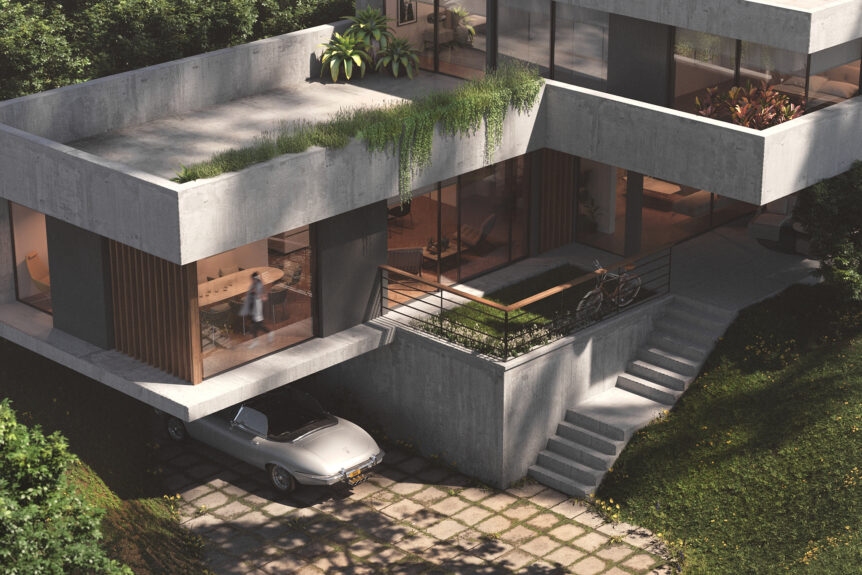
Slow Architecture
– Words by Glen Thomas of Cardiff- based design practice Glen Thomas Architecture and judge of BBC Wales’ Home of the Year
We live in a busy world, where technology, innovation, and creativity move ‘forward’ at rate. Whilst this ever changing landscape drives progress, in everything from architecture to engineering and medicine, there is a concern that we risk losing the ‘soul of the process’.
In the realm of architecture and design, it is the considered and contextual approach that can lead to spaces which engage emotion and promote wellbeing in an enriching and provocative fashion.
Recent social movements relating to the need for ‘slow food’ have splintered off into ‘slow fashion’, ‘slow travel’ and ‘slow architecture’. Consideration to the quality and longevity of a building becomes more important than what ‘statement’ it makes and how fast it can be built. Timeless spaces that encourage living in that present moment and experiencing the intense beauty of the ‘now’ are critical to our emotional health.
Architecture is often thought of in terms of materials from: concrete, glass, steel and timber. It becomes more interesting and engaging, however, when one considers designing houses from light and shade, solidity and transparency, sound volume and texture.
It is this methodical and holistic design process that can create spaces that promote ’emotion’. Whether it be a sense of joy, longing, reflection, calmness, anticipation or simply to evoke a strong sense of identity and place. Enriching architecture and design can achieve this powerful emotional resonance. Adopting this idea of ‘slow’ design can have an effect on how we experience our surroundings and encourage meaningful social interaction as well as promoting physical and mental health in a multi-sensory way.
In the same way that American post-war painter Edward Hopper used colours, dramatic angles and subtle expressions of light, to create scenes that make the ordinary appear almost otherworldly or spiritual, evocative and thoughtful design in architecture can be a powerful and wonderful tool that can enable us to feel the present moment and enjoy it for its simplicity and realness. Architecture has the power to connect the occupier with the ‘moment’, by using ‘form’ and material to sculpt and paint daylight, sound and water.
Meditation or just being ‘present’ does not have goal. If you are trying to get something out of it, then you are not meditating. It is purely about the moment- just as good architecture should not represent ‘ego’ or an aspiration. It is simply just what it is- nameless but present. It is more akin to dancing or playing music in that sense. Materials and building blocks only give us the tools to create environments conducive to feeling alive. It is a creative thought process and the ‘otherness’ of what you experience in that environment that feeds the soul and we should strive for.








